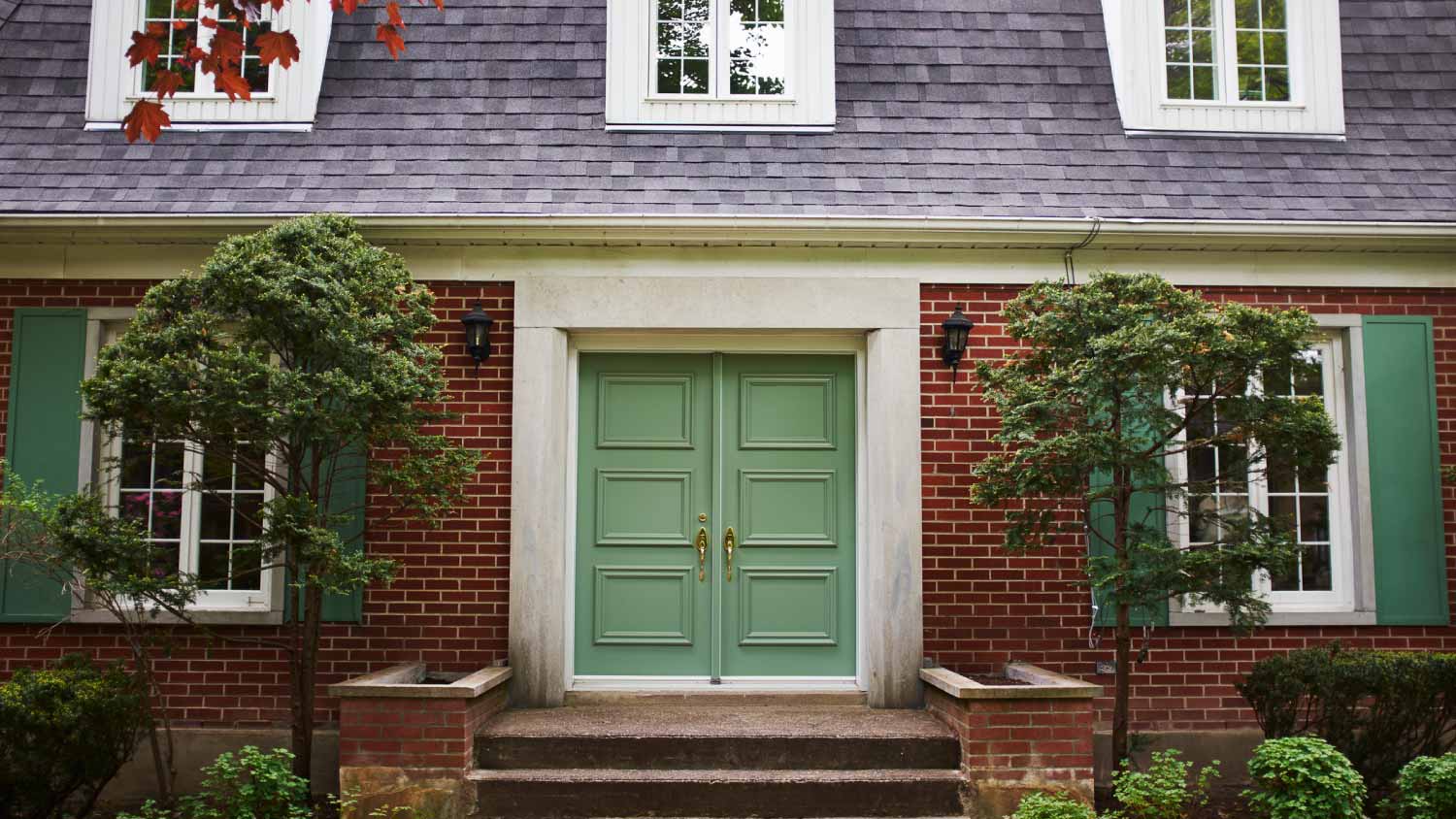
The cost to stain a deck varies depending on its size, location, and type of stain. Keep reading to learn more about how much you might spend.
Make your windows pop with some fresh paint


Before you restore an old window frame, you should take a close look at the underlying surface. If it’s a wood frame, it should be free of dry rot, sponginess, and other signs of structural decay before you start painting. If you have dry rot, excessive moisture, or clear indications that the wood is decayed, you may need to apply epoxy resin— or completely replace the window frame.
If all looks well, you can grab your paint brush and move on to the fun part—actually painting the window frames.
Gather all your tools and supplies, and if your home was built before 1978, start by grabbing your lead swab testing kit. It’s critical to exercise lead paint safety and figure out whether the existing paint bed contains lead before you paint over it. Lead is a toxic metal that can lead to serious health problems when it’s inhaled or ingested, according to the U.S. Department of Housing and Urban Development. It’s especially harmful to young kids. Fortunately, testing kits are available in most home improvement stores, or you can hire a professional lead testing company.

Next, using a fresh razor blade, cut around the glass edge of the window first. This will create a breakpoint for the old material once you start scraping it with a putty knife or paint scraper. Working in sections, remove the visibly loose pieces of paint that come up easily. Collect these pieces carefully and discard them.

Once you’ve cleaned up and removed the bubbling or other loose pieces of material from the window frame, you’re going to feather the edges of the old paint. Be careful not to brush the glass and scratch it with sandpaper. You should lightly sand and smooth the transition between the raw wood of the window frame and the old paint. Your goal is to create a surface that will hold paint without creating an edge for mold and dirt to seep in, eventually leading to paint failure. Be sure to vigorously sand raw wood to let the primer soak in.

After preparing the wood frame, the most important step is a solid primer coat. You’ll want to saturate the substrate with a good quality primer—preferably oil-based—and cover up both the raw wood and old paint material. This will create a suitable base coat for the paint finish and protect the underlying wood in the process.

The cherry on top of any painting project is always the finish coat. Swipe on a few paint layers with your paint brush while paying close attention to the transition between wood and glass. You’ll want to float a smooth, rolled edge to create a barrier between the two.
Painter’s tape can help you out here, but now is a good time to practice your skills at drawing a clean, straight line with a brush. The organic nature of the job versus using painter’s tape will create a better edge seal.
Assuming that you know your way around a paint brush, painting a window frame is a job that can be DIY’d. If you’re new to the field and don’t want to deal with the scraping and priming (or you’d rather just save yourself some time) it’s fine to hire a professional painter.
When it comes to paint application, there are two steps in the process: priming and painting. You’ll want to use a high-quality primer as the base coat and an exterior paint for the finish to protect your real estate investment. For window frames, you’ll want to use a satin or semi-gloss paint sheen. Flat and matte don’t do well against the elements in the long run because they can attract mold and dirt.
Painting vinyl window frames can be done with the right paint and proper preparation of the substrate. However, the edges that encompass the slide rail of the windows cannot be painted without sealing up the window, making it an extraordinarily difficult procedure and not one well-suited for the casual DIY painter. If your vinyl windows have faded out to a point where you’re thinking of painting them, it’s likely that you’d benefit from having a window company replace them entirely.
The same principle applies to painting aluminum or vinyl window frames. You’ll still need to deal with the slide rails that hold the movable windows. You cannot paint these as it’ll seal in the window, rendering it immovable if you try to open it.
In general, if you have wood window frames that need painting you should consider repairing them. The nostalgia and high-end nature of wooden windows often outweighs the costs of remediation. If you have vinyl or aluminum windows, it’s likely a matter of deciding if you can afford the cost of replacement windows.
From average costs to expert advice, get all the answers you need to get your job done.

The cost to stain a deck varies depending on its size, location, and type of stain. Keep reading to learn more about how much you might spend.

Painting a garage door is one of the most impactful projects you can undertake with a smaller budget. Learn what makes up the total cost, as well as tips on how you can save.

Powder coating can give your furniture, car, and other objects a new look. Learn what powder coating costs by object, size, and other factors with this guide.

Knowing how to pick a front door color will help you achieve the style you desire and boost your curb appeal.

Painting a brick house is a permanent renovation project that requires weighing the pros and cons. Keep reading to find out if you should paint your brick home.

Can you stain pressure-treated wood? You can indeed stain your pressure-treated wood to help it last longer and look its best.